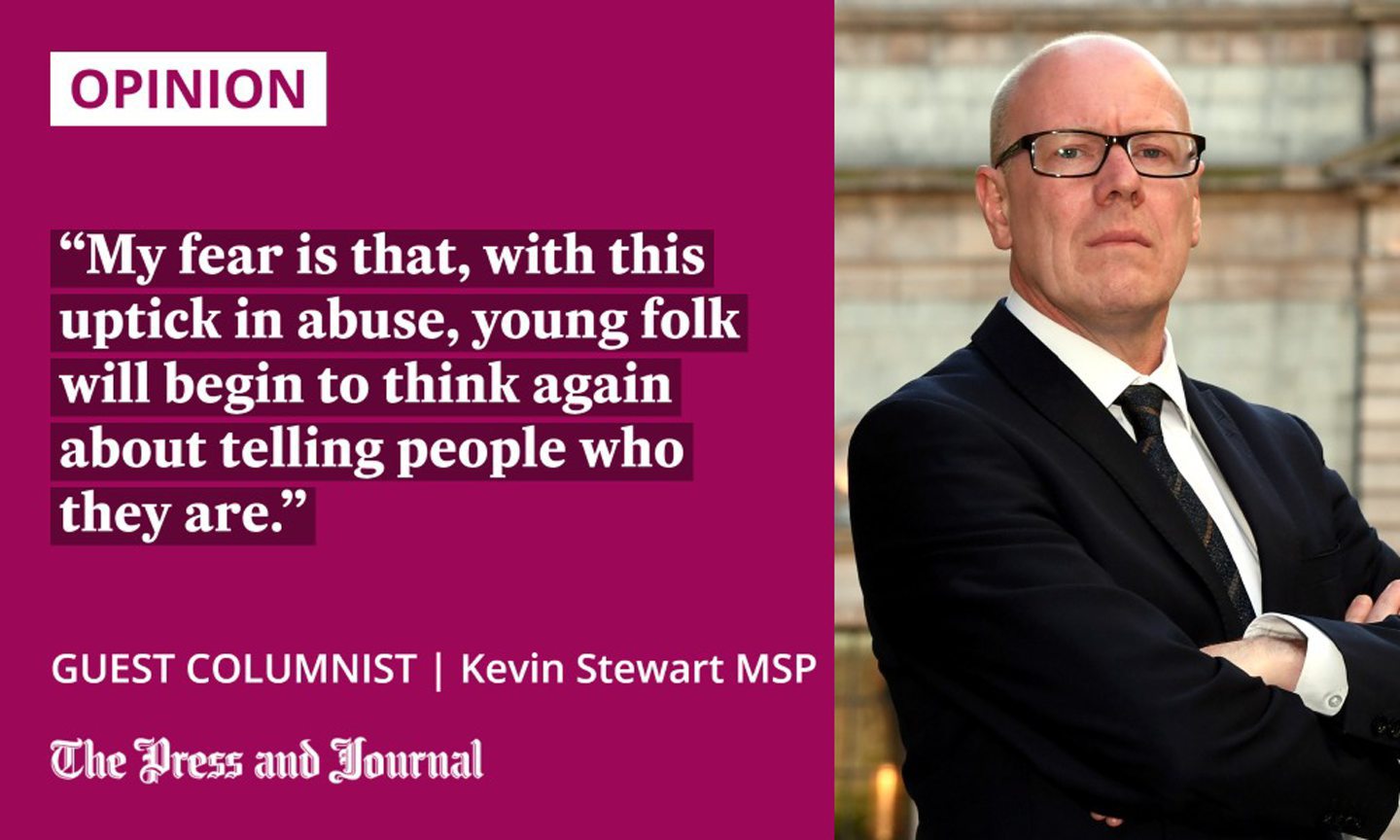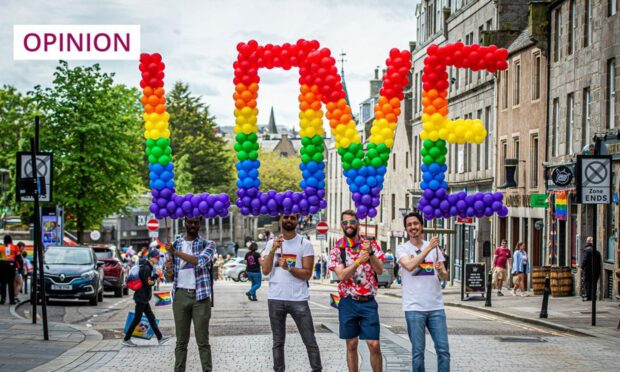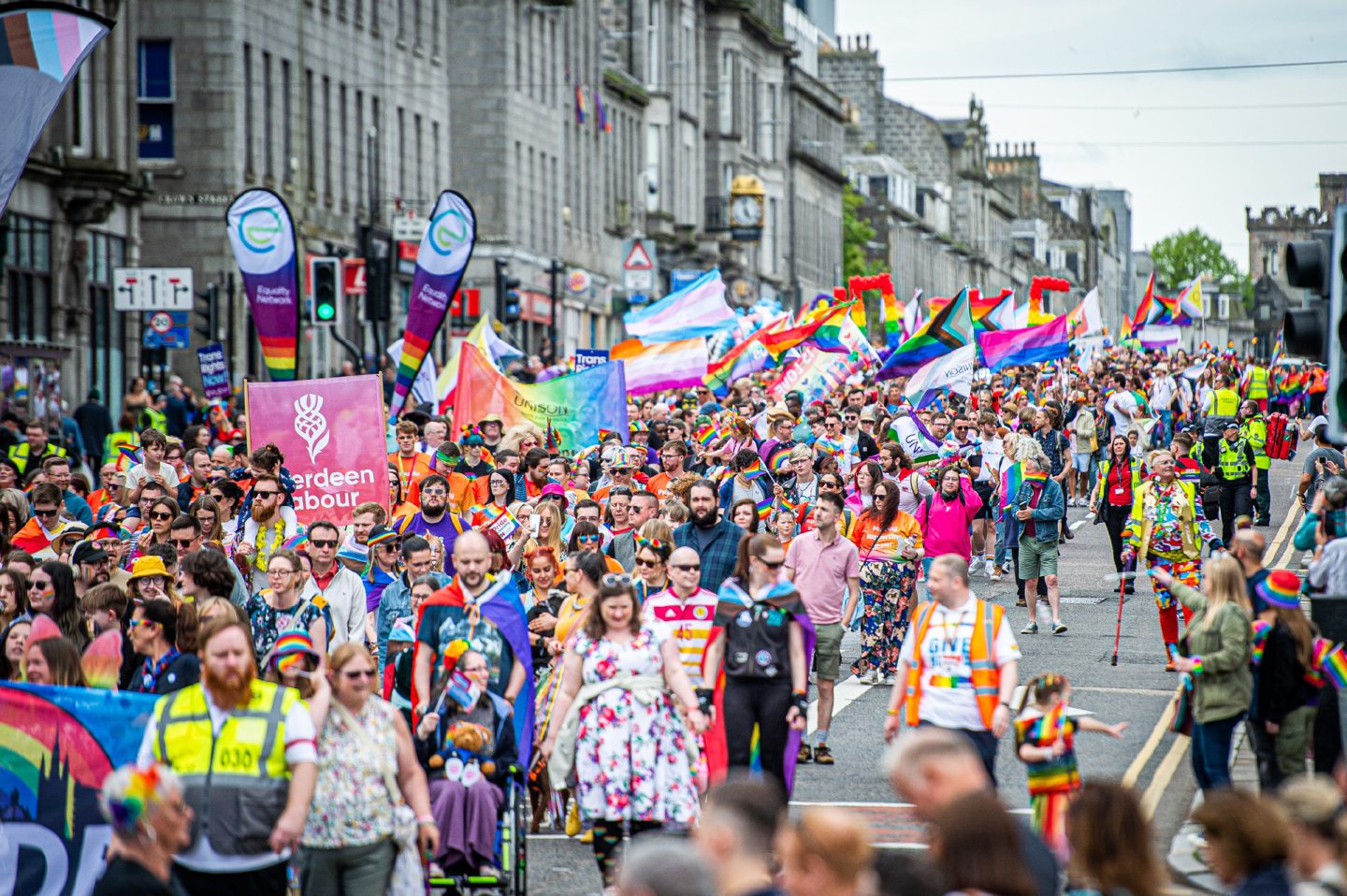Grampian Pride this weekend past was a great success – it was well organised, well attended, and even the weather played its part with a day of glorious sunshine.
The whole event showcased Aberdeen at its best, as thousands of people who are LGBT+, and those who love and support them, marched along Union Street, then celebrated in Duthie Park.
Pride marches started as a protest, against persecution, for equal rights and for protection from abuse and discrimination. We’ve seen great progress on LGBT+ rights in recent years, but there is still work to do and we cannot be complacent about retaining the rights we have had to fight so hard for. That is why Pride is, at its heart, still a protest.
And, after posting about the event on Twitter, I was soon reminded about the need for Pride to be a protest. A simple picture and a note that it was a great event resulted in me being sent a slew of homophobic nonsense.
I’ve grown a pretty thick skin over the years, but it’s still disappointing to be targeted for being a gay man. It doesn’t have a huge impact on me, but it does make me angry.

I never came out until I was 39, because of the years I grew up in. I became a teenager the year after homosexuality was decriminalised in Scotland; I was a teenager at the time of section 28 and when HIV was being described as a “gay plague”.
It is much easier now for people to express their sexuality than when I was younger. However, my fear is that, with this uptick in abuse, young folk will begin to think again about telling people who they are.
Abuse seems to have become much more common on Twitter recently. This perhaps stems from its new owner being keen to excuse some of the most awful behaviour, while failing to deal with bots and anonymous accounts.
The age of social media has given voices to the voiceless and allowed leaps forward in freedom of speech. Freedom of speech is not absolute, though – it needs to be tempered where it is dangerous, abusive and interferes with other rights.
Bright and sunny day at @GrampianPride
Always a great event. 🏳️🌈 🏳️⚧️ pic.twitter.com/e3c67LLbTJ
— Kevin Stewart SNP (@KevinStewartSNP) May 27, 2023
Most platforms have drawn lines around how that is done, but Twitter appears to have walked away from its responsibilities, restoring thousands of previously banned accounts in the process.
It feels like Twitter has become the go-to place for people who wish to peddle hate. That such offensive tweets are going unpunished is emboldening those who are posting abusive, hurtful and threatening tweets.
It’s not just LGBT+ people who are being attacked – the racist abuse Humza Yousaf has faced on the internet, for example, is also appalling. Rather than giving voice to the voiceless, Twitter now seems to be amplifying bigots and would-be oppressors.
Abuse is not solely an online issue
This is not an issue that exists solely online. The UK Government now appears to be trying to force a culture war upon us, enticing us to blame our fellow citizens for its own failings. Most folk have, thankfully, given these attempts short shrift.
However, the policies that are being progressed to try to push this culture war, and the small amount of traction it has garnered, is all impacting on people’s lives – predominantly those who are a minority, in one way or another.
I hope that we can continue to send a message that Aberdeen has become more accepting of all, and that we will not blame our fellow human beings for the failures of governments.
It has been wonderful to see the Grampian Pride event growing over the past decade, and to see our city becoming a more progressive place during that time.
As we have seen with Pride, let’s continue to stand alongside our friends, our families, and our fellow Aberdonians – whoever they are, whoever they love, wherever they are from.
Grampian Pride remains a protest, and I will continue to attend, year after year, to progress and protect the rights of the LGBT+ community.
Kevin Stewart is MSP for Aberdeen Central, and Scotland’s minister for transport












Conversation